Nikon D5600 Review
Nikon D5600
Nikon’s latest intermediate-level DSLR is put to the test
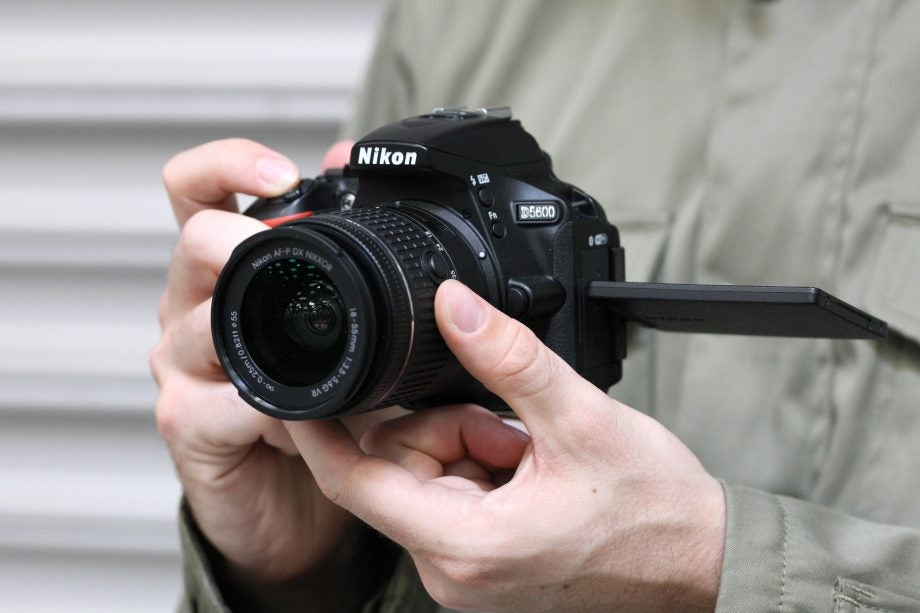
Sections
- Page 1 Nikon D5600 Review
- Page 2 Nikon D5600 – Performance, Image Quality and Verdict Review
Verdict
Pros
- Very good image quality
- Small and lightweight
- Excellent touchscreen and general handling
- SnapBridge makes light work of image transfer
Cons
- Touchscreen can’t be disabled
- JPEGs can be a bit on the dark side
Key Specifications
- Review Price: £649.00 (body only)
What is the Nikon D5600?
The Nikon D5600 is a direct replacement for the two-year-old Nikon D5500 that has now been discontinued. The new model is primarily targeted at photography enthusiasts looking to buy their first DSLR and who have a little more money to spend, along with existing owners of older entry-level Nikon DSLRs looking to upgrade.
Related: Best cameras
Nikon D5600 – Features
In terms of its headline specifications, the D5600 is almost identical to the D5500 it replaces. That said, the newer model does benefit from a few useful new features. Chief among these is the addition of Nikon’s proprietary SnapBridge technology that uses Bluetooth Low Energy (BLE) tech for wireless image-transfer duties between the camera and a connected smartphone or tablet.
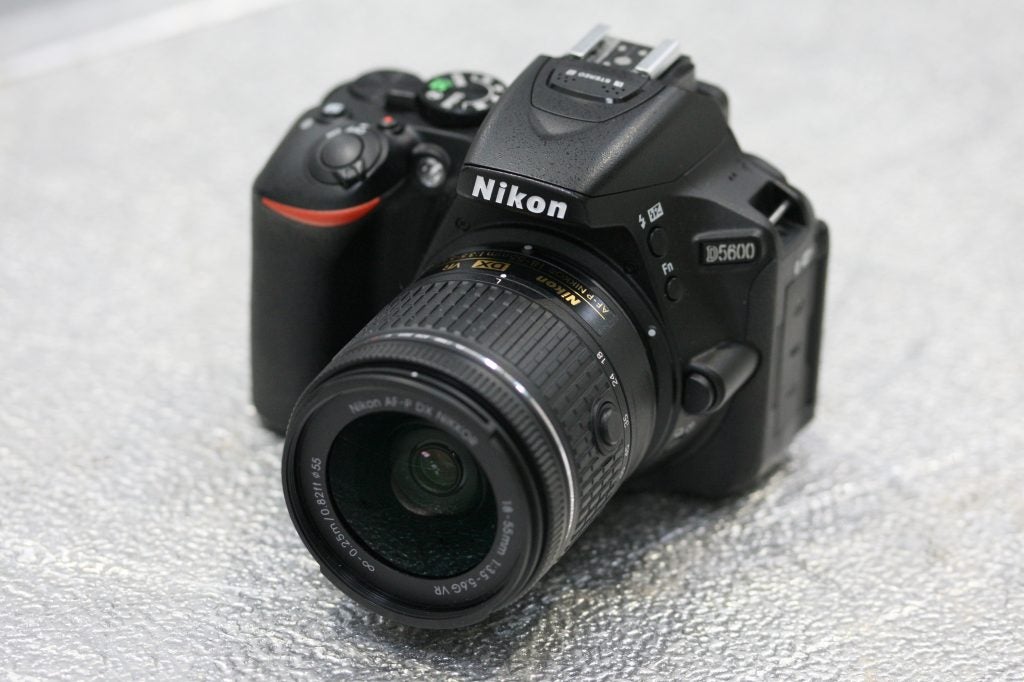
A timelapse mode has also been added, and the D5600 comes with a brand-new kit lens in the shape of the Nikon AF-P DX 18-55mm f/3.5-5.6G VR. This employs a retractable design for added compactness and comes with Nikon’s Vibration Reduction (VR) image-stabilisation technology built in. Unlike the AF-S DX 18-55mm f/3.5-5.6G VR II that came with the D5500, there is no VR on/off switch located on the lens itself – you’ll need to use the in-camera menu instead. Neither is there an MF/AF switch, although manual override is available by default.
Aside from these subtle additions, there isn’t a great deal of difference between the D5600 and its predecessor. In keeping with the D5500, the D5600 is fitted with a 24.2MP APS-C CMOS sensor. This provides ample resolution for larger prints, along with a generous degree of image-cropping flexibility. As with previous models, the sensor forgoes an optical low-pass filter in order to maximise sharpness and fine detail, and the D5600 also employs the same Nikon EXPEED 4 image processor that was used in the D5500.
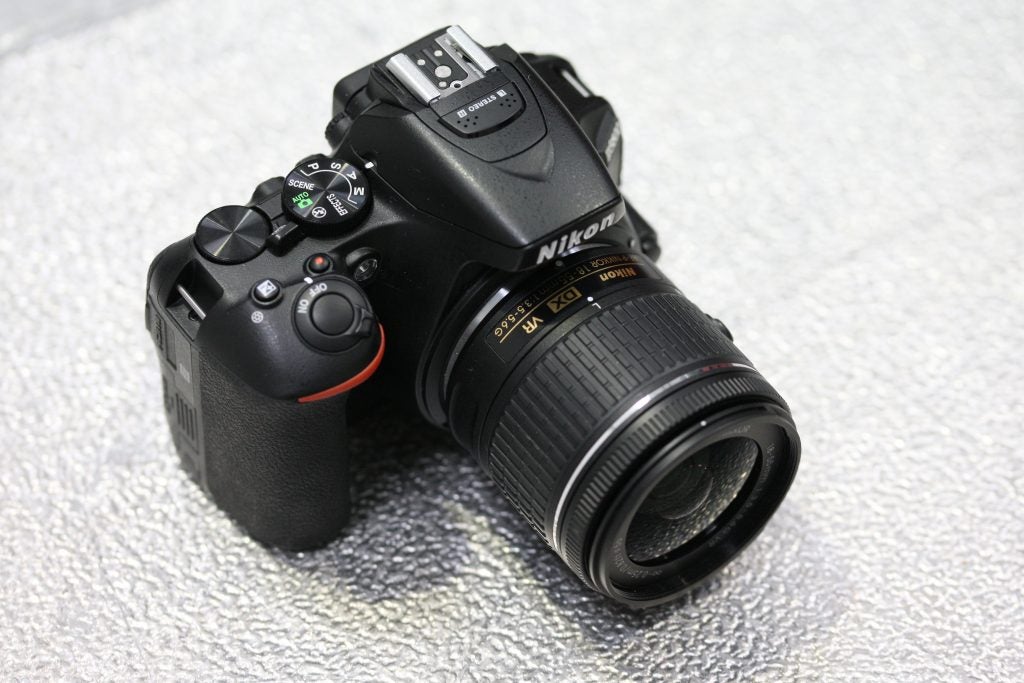
Shutter speeds range from 30-1/4000sec, while sensitivity ranges from ISO 100-25,600. Still-image capture options extend to large (24MP), medium (13.5MP) and small (6MP) JPEGs processed in-camera, while those looking for more versatility in post-production can choose between 12-bit and 14-bit lossless raw. Video capture is possible at 1080p Full HD or 720p HD at up to 60fps, and the D5600 also sports a dedicated microphone jack, although there’s no headphone jack.
The main addition to the D5600 is undoubtedly SnapBridge, which uses Bluetooth Low Energy (BLE) technology to establish an always-on connection to a smartphone or tablet. It’s designed to automatically transfer all captured images from the D5600 to your device for sharing, but you can choose to manually transfer specific ones yourself. They can be transferred at their original size, or limited to 2MB per image in order to save memory. The main benefit of SnapBridge is that Bluetooth consumes less power than Wi-Fi, thereby extending the camera’s battery life. You’ll need to install the SnapBridge app on your phone first, which is free to both Android iOS users.
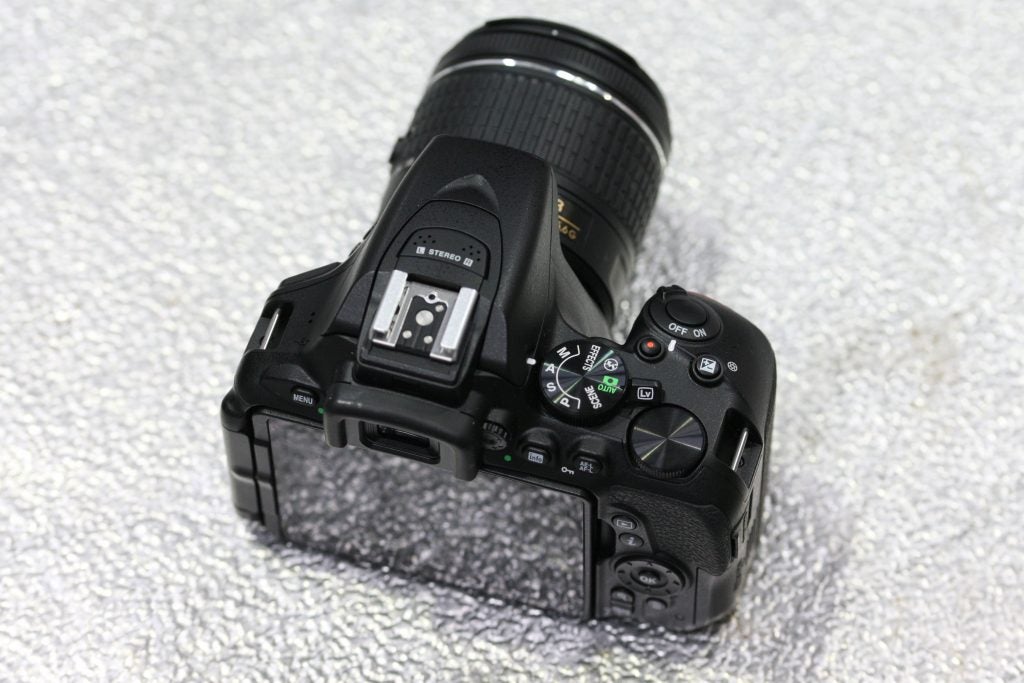
Unlike the cheaper D3400, which only uses Bluetooth connectivity, the D5600 also includes Wi-Fi. This allows you to use SnapBridge as a remote control for your camera, complete with a live view feed. You can select a point of focus by tapping the viewfinder on your smartphone’s screen, but you can’t change any key camera settings remotely via the SnapBridge app. This feels rather primitive in contrast to other manufacturers’ systems, which all let you change shutter speed, aperture, ISO and so on directly from your smartphone.
Nikon D5600 – Build and design
The D5600 is one of the smallest and lightest DSLRs on the market. It’s even slightly smaller than the cheaper Nikon D3400. While overall build quality obviously isn’t in the same league as more expensive Nikon DSLRs, its polycarbonate shell feels robust enough to soak up the odd minor knock. It isn’t weather-proofed so you’ll want to take care when using it in the wet.
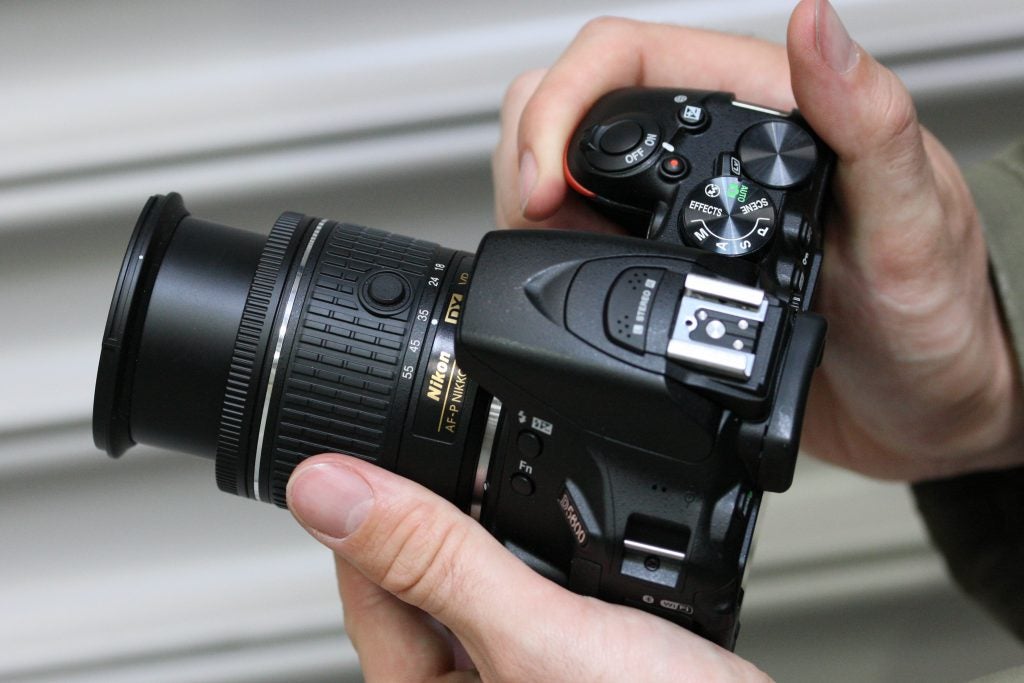
Despite its relatively small size, the D5600 offers a deep finger grip that, combined with the ridged thumb rest on the back, offers a reassuringly secure grip. Overall, it feels nicely balanced in the hand and handles very well. General operation is quick and efficient thanks primarily to the camera’s large display and responsive touchscreen. My only minor gripe is that it’s easy to move the active AF point inadvertently with your nose when holding the camera at eye level, but the touchscreen can be turned off if you find this a problem.

Buttons and controls are generously spaced and clearly labelled, although unlike all its main rivals, the D5600 lacks any buttons that provide direct access to commonly used settings such as ISO, AF mode and white balance. If you want to change any of these, by far the quickest way is to press the ‘i’ button, which takes you to a streamlined settings interface, from where you can access and change the most commonly used controls using the touchscreen.


